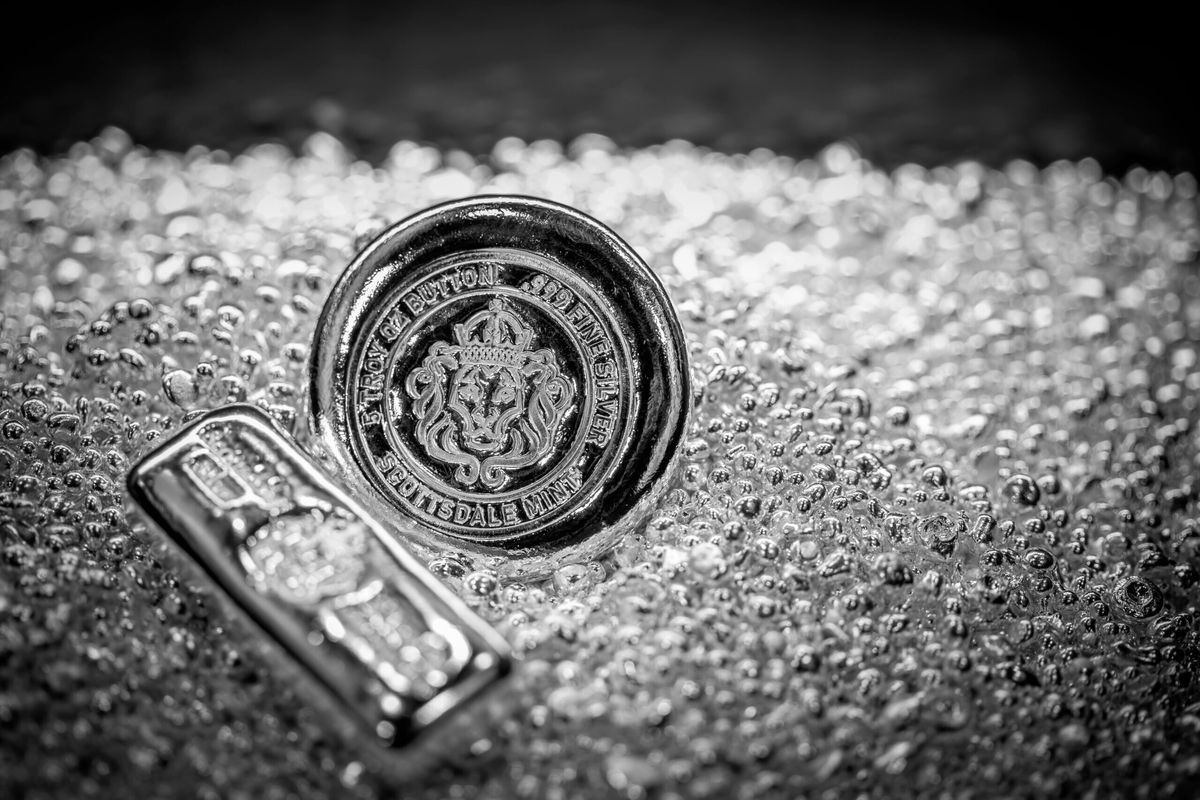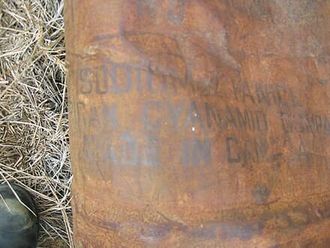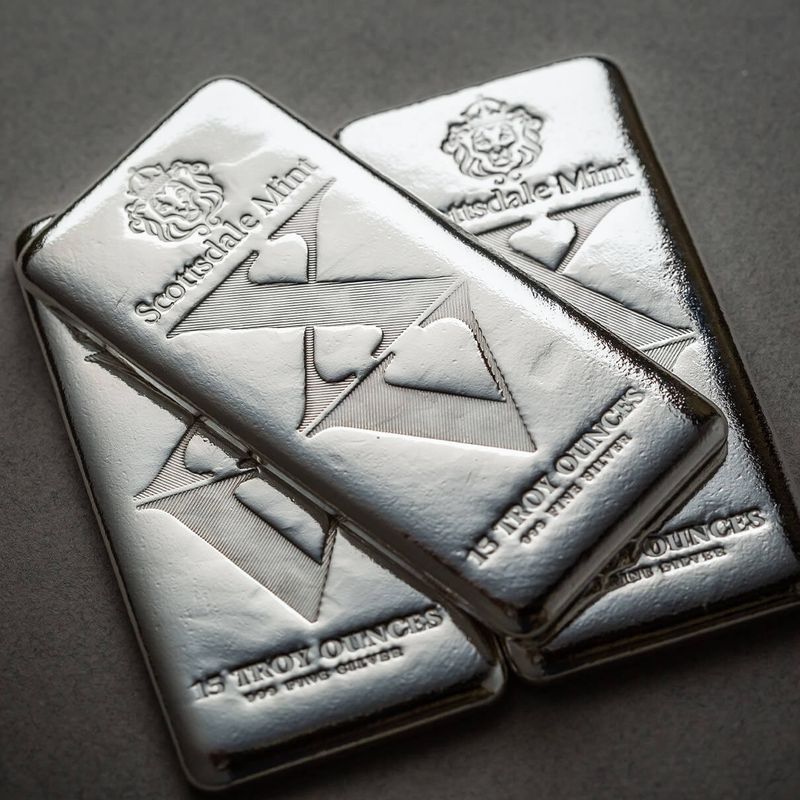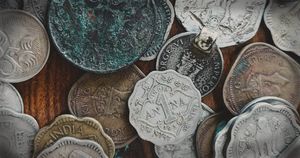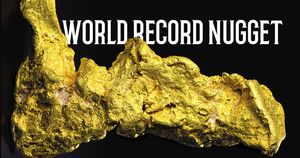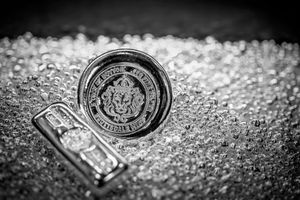The making of silver: how is it done?
This article is about how silver gets its start and the role it plays for mints around the world. What exactly goes into making a Scottsdale Stacker or Cowboy Round? It may come as no surprise, that it requires much work to get the final product ready to ship.
Not only does the silver need to be mined, refined, and refined even further – it undergoes a complete transformation once the raw product arrives at the mint. It requires state-of-the-art machinery, engineers, designers, operators, and more. Minting the highest quality bullion in the market means going the extra mile in every step.
The process of making silver coins and other precious metals is an entire journey. Therefore, taking it to square one will be much easier, starting in the mines.
Step One: Silver Mining
Interestingly enough, when it comes to mining silver, it’s usually a by-product of digging for other metals like copper, gold, lead, and zinc. Silver mines are less common, but they do exist.
There are two primary methods used: open pit and underground mining. The method chosen depends on the type of ore, which is a natural rock or mineral from which valuable metals can be extracted, and its location.
Open pit methods involve dynamite and the use of heavy machinery to dig up silver deposits near the ground surface. This method is typically used for lower-grade silver in big quantities. Of the two methods, this is the safest.
Underground methods involve tunneling deep into the ground and using dynamite. The ore is then extracted using compact machinery and sent above ground for further processing.
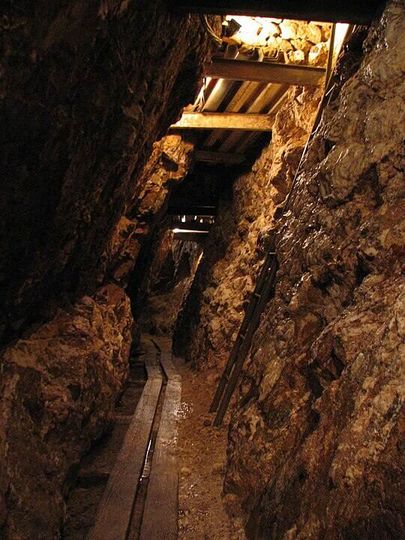
Next: Extracting From The Silver Ore
After the silver ores are blasted out of and collected from the mines, they need to be processed further before the silver can be extracted. The large ores go through multiple crushers, each one grinding the crushed ore finer and finer.
Once the ore has been turned into more of a baby powder consistency, it can now be extracted. There are many methods to refine silver ore, and below are the most commonly used today. Entire courses can be taught on just these extraction techniques for precious metals, needless to say, these descriptions are a bit watered down.
Floatation: The silver particles (along with the other metals) are put into a large vat, a general container used for holding liquids in various industrial processes, of water. Chemicals are added that make the dense particles float, along with the silver. The silver then becomes hydrophobic and can be skimmed from the top to be dried out.
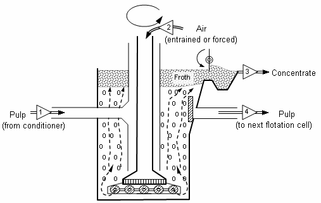
Leaching: This process uses sodium cyanide to dissolve the silver in a large tank (also worth mentioning, the cyanide can separate gold too). The solids are then separated from the water in a settling tank; the silver is de-aerated and zinc dust is added. This mixture then goes through filters to remove the cyanide solution. The remaining zinc and silver precipitate is collected, dried, and put into large ovens that burn the waste materials off.
The silver is then melted into bars and sold to refineries for further processing. At this point, the silver content is high, but not yet bullion grade, and more metals need to be removed.
One Last Step Before Minting – Refining
The method used to further process the silver bars will depend on the other major metals present. If the other metal is copper, electrolytic refining is used. If lead is present, then the Parkes process is used.
Electrolytic Refining: This process is used to separate silver from copper, and uses a combination of electrical current and chemicals to refine silver into a pure form. The first step begins by placing the impure silver inside an electrolyte solution, which works to pass energy through to dissimilar metals. Electricity is then passed through the solution, which then results in silver building up on the positive electrode and copper on the negative electrode. The silver is smelted, which involves heating it to high temperatures to separate the metal from further impurities, and the process can be repeated until pure silver remains.
Parkes Process: When refiners need to separate silver from lead, zinc is added to the molten solution (also known as a liquid mixture of melted metals or metal compounds). This works because silver and zinc can intermingle, but lead doesn’t mix with zinc. The silver and zinc will float to the top of the molten solution to be skimmed off and the lead will remain at the bottom. Keep in mind, that this isn’t a perfect process, as there will be some silver mixed with the lead, and it will be extracted using a process called cupellation. The zinc and silver compound is heated and distilled until pure silver remains.
During the refining process, the silver undergoes laboratory examination at different stages to ensure its purity. Sterling silver in place of .999 pure silver is not acceptable.
For this article, what follows next will be the silver bullion process.
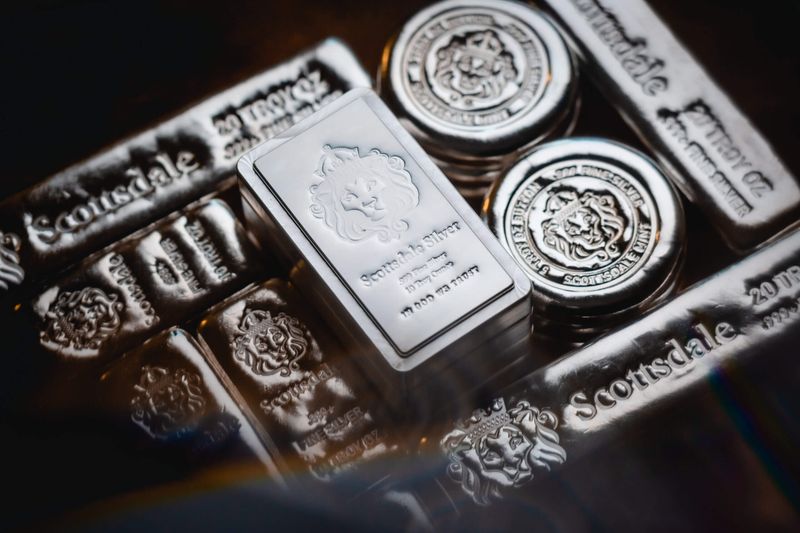
Turning Silver into Silver Bullion
Here comes the coolest part (we might be a bit biased), where massive hunks of silver are turned into eye-catching silver rounds, coins, and bars. Depending on the final product, there are different steps taken to fulfill those orders. For example, minted bars are more energy-intensive than casted bars – we’ll talk about the difference further down.
How Are Silver Coins Made?
1. Design
Before the furnaces are fired up or any equipment is turned on, a design needs to be approved, and a die made. Part of what makes precious metals fun are the slick and cool designs. Even a more modest design requires hours of refinement and inspection. It’s part of what makes Scottsdale Mint different – we’re always looking to bring something new to the market of investors and collectors.
Each piece of bullion is designed by hand by one of our incredible artists. Once the design is complete, a pair of master dies are created. Think of the die as a metal stamp with the inverse of the design etched into it. These will be used during the striking process to imprint the design on the coin, round, and or bar.
2. Melting the Silver
First off, working with massive silver bars is not ideal. The size is not consistent nor uniform, which does not aid in precise manufacturing. Rather the silver is melted and formed into a billet: it now looks like a long cylinder of silver. These are made to be uniform in size and a perfect fit for the extruder, a machine that forces the billet through a die to shape it into thin, long strips.
3. Extruding the Silver
The billet is then softened by heating, and then sent through an extruder. Silver is extremely pliable and part of what makes it great for making electronic equipment. This pliability allows us to extrude the silver into thin, long strips of silver. Each strip is inspected for any deep scratches or other major flaws.
4. Punching Blanks
The strips of silver are fed through a press and are punched with the desired weight of the round. As the name implies, these look like blank coins. At every stage, there’s some form of quality control. Technicians make sure the blanks are the appropriate weight and that no major blemishes are present.
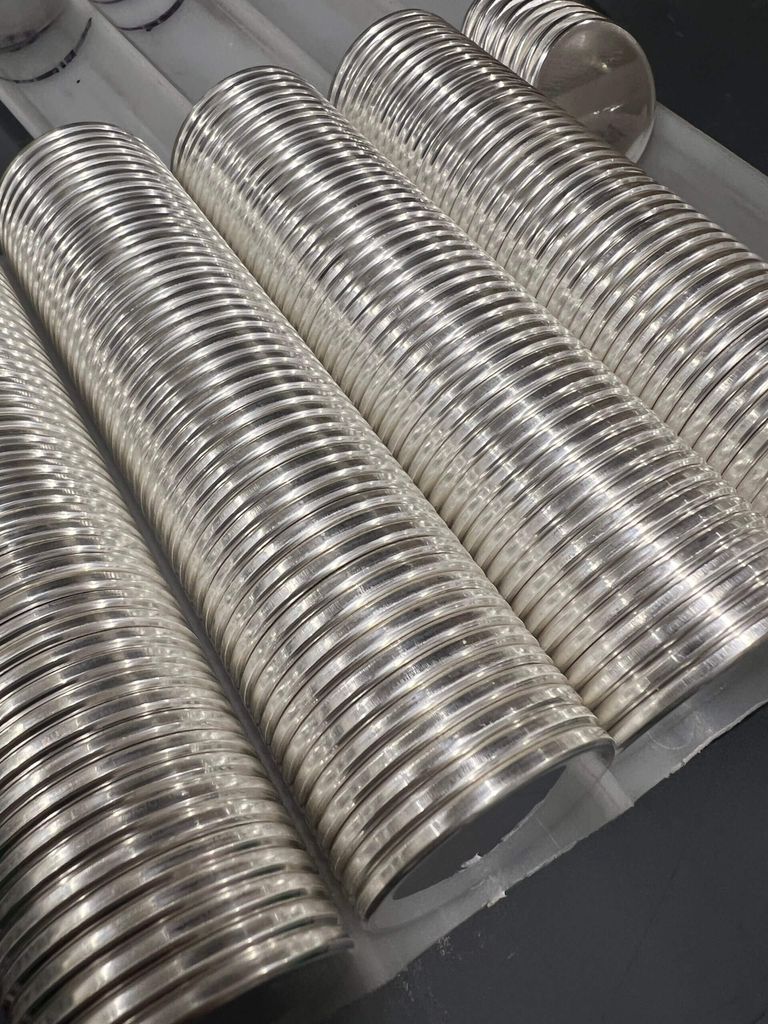
5. Burnishing
Here’s where the rounds get their shine! The blanks are mixed with a solution of soap, water, and tiny metal ball bearings. The tiny ball bearings work to buff out any scratches and rough edges. This step (like every step) is crucial and gives our rounds that signature Scottsdale Mint mirror-like shine and finish.
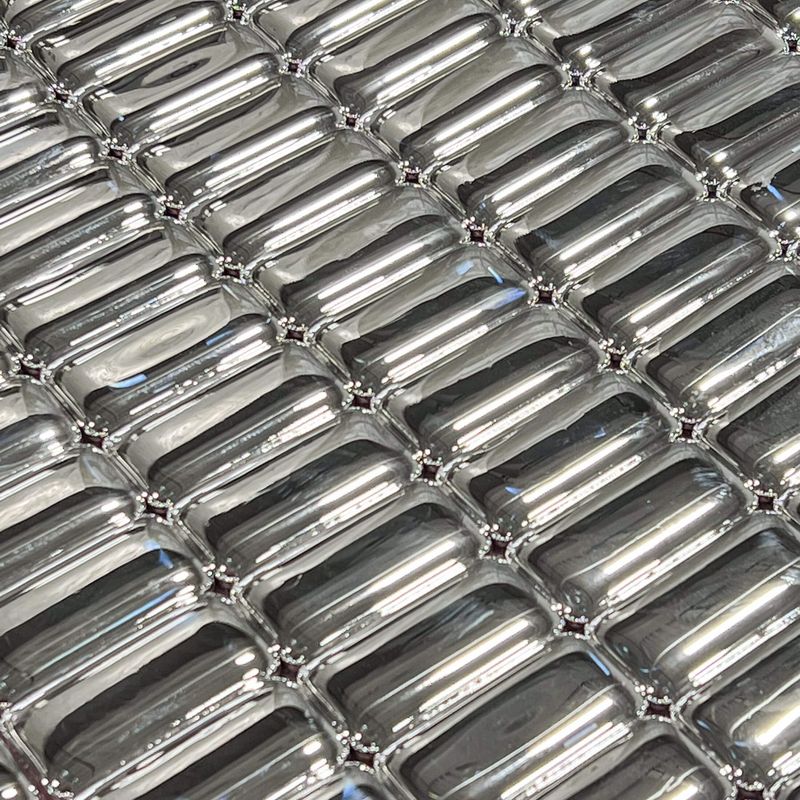
6. Here Comes the Strike
Almost there! The rounds are struck with the die on both sides and sent on their way. Scottsdale Mint’s signature striking process results in a proof-like finish.
7. Final Inspection
Each round is carefully inspected before being sold and shipped. Anything that doesn’t make it past the final step of quality control will be recycled and melted down again.
Minted vs Casted Bullion
Not all precious metals are made the same, some bullion looks refined and others have more of an organic feel. With being one of only a handful of private mints in the USA, Scottsdale Mint can have full control over the entire minting process. This freedom allows us to be more creative and innovative than anyone else in the industry, and create one-of-a-kind pieces using an array of minting practices. This leads us to our next question, how do minted and casted bullion differ and how is each one made?
How Minting Works:
Very similar to the process described above in minting coins and rounds, the same steps are taken to create bars. This results in identical pieces being made and is extremely crucial for products like the Stackers and legal tender.
Here’s an example of a minted struck piece:
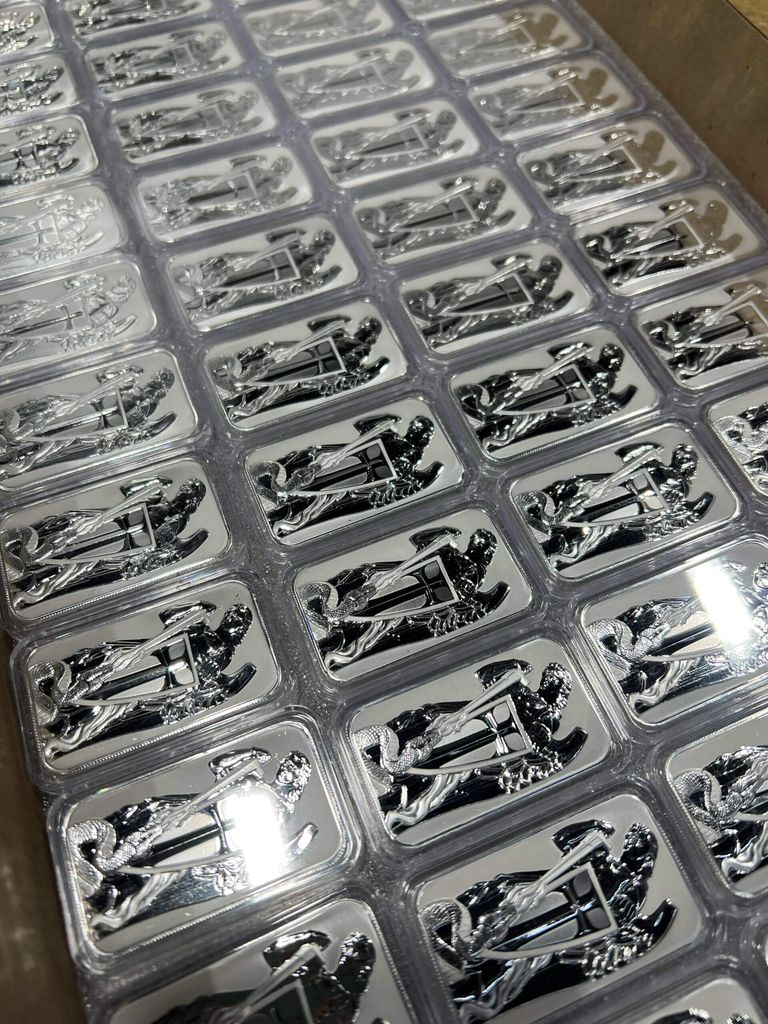
How Casting Works:
Molten silver or other precious metals are poured into molds until full, and the design is usually etched on the bottom of the cast. When the metal has cooled enough, the bars are removed from the casting to reveal the design on the flip side. These pieces are incredibly beautiful and unique in their way. It’s a nod to the old-school way of doing things, and the imperfections add a level of human touch and personality to each piece.
Here’s an example of a cast piece:
Are Bars or Rounds Better?
This is a question that will forever echo in the minds of beginner precious metal investors. At the end of the day, when it comes to buying silver and gold, the deciding factor comes down to what you want to buy. Some stackers are solely into rounds, and others are evangelists for bars. With that being said, each has its pros, which we will cover here.
Why Rounds?
Keep in mind that rounds and coins differ in that coins are legal tender and rounds are not. That’s usually why coins tend to have a higher markup, because of their monetary backing, but they also command a higher resell value.
Rounds are coin-shaped pieces of silver usually imprinted with a design and come in a variety of smaller sizes, such as .5 oz, 1 oz, 2 oz, and 5 oz. Rounds make for easy and low-cost investment purchases, and can also have a level of collectibility that raises their intrinsic value. Taking a look at some of Scottsdale Mint’s series, many of the coins from past years command a significantly higher asking price because of the low mintage and availability.
Also worth mentioning, many investors enjoy the collectibility aspect of precious metals. That’s why much of Scottsdale Mint’s selection plays to both collectors and investors.
Why Bars?
The main advantage bars have over rounds is that they are usually more cost-effective because bars come in larger sizes than rounds. It’s the “Costco effect”, the more you get, the better the price. There are options to buy up to 100 oz bars and beyond. It’d be a bit silly to mint a 100 oz coin and it defeats the purpose of being easier to transport.
Also, in most cases, bars have the advantage of taking up less room in storage. Bars are easier to stack because of their uniform size. However, Scottsdale Mint created the Scottsdale Stacker. There is both a round and bar version – each piece is precision machined and engineered to interlock. Here’s something cool: all the rounds, no matter the size, interlock and stack seamlessly!
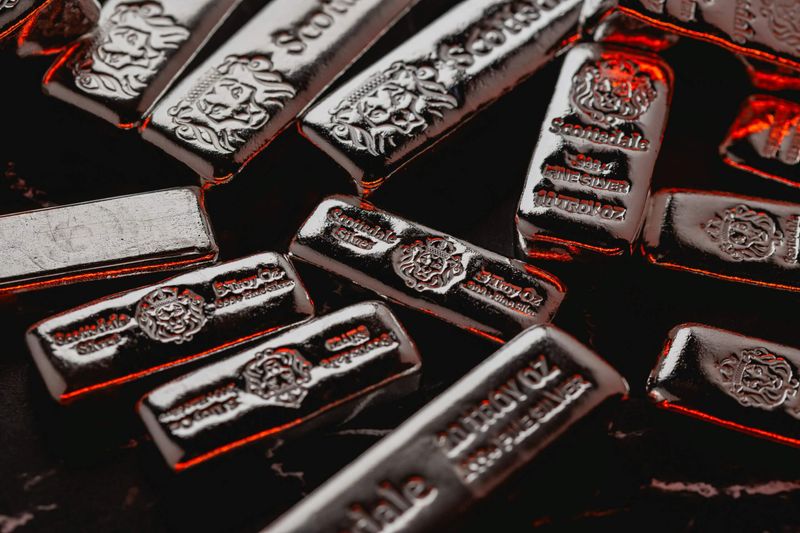
Final Thoughts
The journey of silver from mine to mint is a complex and fascinating process that highlights the intricate craftsmanship involved in producing high-quality bullion. Each step, from mining and refining to minting and finishing, plays a crucial role in ensuring that the final products meet the high standards expected by collectors and investors alike. Understanding this journey not only deepens appreciation for silver coins, rounds, and bars but also emphasizes the skill and technology behind their creation. As you consider adding silver to your collection or investment portfolio, remember the craftsmanship and dedication that go into every piece. Additionally, keep in mind the importance of proper storage of silver; whether you choose rounds or bars, ensuring their safety and condition will help preserve their value over time, making each piece a unique representation of both art and worth.
